

Exploring our past to sort out myth from reality
Share this Page on
Facebook or Twitter

These are the voyages of the TimeShip Anachron.
Our Mission: To boldly explore the past, dispelling
mythinformation and mythconceptions
of American History along the way.
 Visit us on Facebook
Visit us on Facebook
Meet MythAmerica Series

Pt 1 Pt 2 Pt 3 Pt 4 Pt 5 Pt 6 Pt 7 Pt 8 Pt 9 Pt 10 Pt 11
The Not-So-Gay Nineties, Part 8
American Pickers Meet
American Hoarders
Back in the late 1990s, I helped my daughter Ramona homeschool her two children for a time. (As a certified elementary teacher with a degree in Education, I had homeschooled Ramona herself back in the 1970s.) Like a lot of homeschooling parents/grandparents, I tried hard to connect lessons in math or vocabulary or whatever to everyday life experiences.
So one day, when the kids were about 9 and 11, I decided it was time to add a new word to their vocabulary lesson. The word was ephemera. A “big” word for grade schoolers! I’m betting that the average American adult is not even familiar with the term. But it seemed like a useful concept to teach them.
You see, their bedrooms were becoming cluttered to the point of perpetual messiness with ephemera. In among their underwear in their drawers, under the beds with the dust bunnies, spilling out of the closets among their shoes and slippers, were ephemeral items.
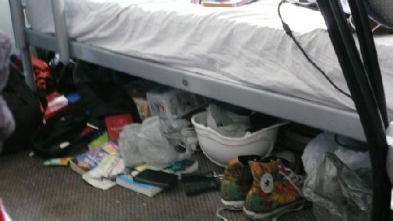
What kind of ephemera? Plastic doodads that originally came with Happy Meals at McDonald's but had long since been ignored. More plastic doodads that were “prizes” from the local “Craig’s Cruisers” kiddy funland place that had long since lost their sparkly attraction. Broken crayons, pencil stubs, unfinished and crumpled construction paper art projects, one half of a set of pony tail bands, game pieces or cards from games long abandoned, and on and on.
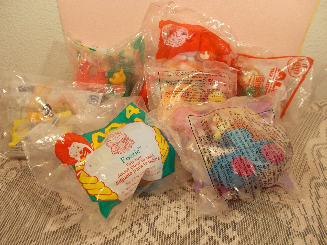
What is ephemera? It’s a word that comes from a Greek word that specifically means something that “lasts only a day.” In common use it has come to mean something that “lasts but a short time,” or is “transitory.” If something is ephemeral, it is short-
The cheap plastic toys that are won at carnivals really are not intended to become family heirlooms. They are intended to be ephemeral objects that will be used to entertain a child for a short time, often broken quickly, and then tossed aside. A Sunday church bulletin that lists the hymns to be sung that day, the title of the sermon, and the church events for the upcoming week is not intended to be framed and cherished forever. It is an ephemeral bit of paper intended to be tossed in the trash at the end of the week once it has served its reminder purpose.
I once saw a clever cartoon that made fun of what many people did with church bulletins and such...they stuffed them in their Bibles, never threw them away—and there was a new word for all that stuff tumbling out of their Bible when they dropped it..."Biblidue." A pun on Bible and residue.
A fresh new coloring book for a child is intended to be ephemeral—once the pictures are all colored in, it has no more purpose, and is ready to be replaced by a new coloring book. Except for maybe saving a few of Junior's first attempts at using crayons, and sending a few to Grandma, those endless pages filled with crayon scribblings are not "works of art" to be saved!
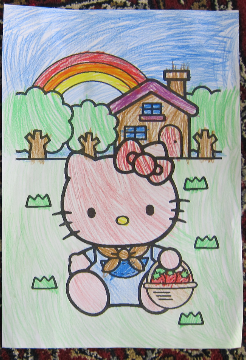
I explained all this to my grandchildren, and then took them on a fishing expedition in their rooms to collect worthless ephemera. Don’t be inclined to think young children cannot understand such a “mature” concept! Jonathan and Katie caught on immediately, and once they had picked through their possessions, evaluated those ephemeral items that had long ago fulfilled their purpose, and began using the trash basket to dispose of them, they were literally proud of themselves …and pleased with how much easier “picking up their room” would be in the future. They came to understand that they were not keeping these items because they “gave them pleasure,” but merely because they were an object they owned. Like huge numbers of people, it hadn’t occurred to them that just because something came into your possession did not mean that you were “obligated” to keep it forever!
Don’t get me wrong … I understand the principle that “one man’s trash is another man’s treasure.” There is no doubt that the occasional “Happy Meal” toy that happens to line up with a child’s passion…such as a miniature super hero figurine or a tiny Barbie Doll…can become a treasured possession, with a place of honor in a permanent collection. Its status has changed from ephemeral to lasting. But a cheap plastic geegaw that has been gathering dust under the bed, mixed in with a dirty sock, a crumpled French fry sack, a dozen broken crayons, a cat toy that has been missing since the cat was a kitten, and three used Kleenexes for the last six months likely does not rise to that status.
Why did I want to help my two young grandchildren understand this concept? Because…they have “inherited” from forebears a strong possible tendency to not just leave clutter under the bed—but to hoarding. In particular, my mother in law, who died back in the year 2000, was what is now commonly referred to as a “pathological hoarder.” In other words, her obsession to keep every item she ever brought into her home had, by the end of her life, trapped her in a gigantic collection of “stuff”…decaying, crumbling, worthless stuff…that crippled her ability to live a normal life and even sapped her finances, leaving her in much more dire financial straits than should have been true.
On a meager Social Security check, she had kept up rent payments for over twenty years on two large and two small storage buildings holding items…that she hadn’t seen in twenty years. While, at age 81, she lived in a cheap one-
And when she died, it fell my lot to have to be the one, all by myself, who sorted through and disposed of all her stuff! My husband had no living siblings, and a recent accident had left him with a broken ankle and a cast on his leg, so he couldn’t be an active part of the project. After the grueling experience of dealing with, literally, a hundred years’ worth of stuff (she had inherited and stored everything HER mother had kept too, who was born in the 1890s) I vowed to obliterate the slightest hint in my own life of a tendency to hoard! I dreaded the thought that I could leave my own daughter with such a burden after I’m gone.
Yes, my own side of the family also had members who had this tendency (although not to that pathological level.) So if hoarding tendencies can be “inherited” (whether by genetics or by example) my grandkids inherited a double dose. I hoped to instill some sense of balance in this next generation when they were young enough to establish lasting habits that could head off those tendencies.
Am I touching a nerve with any of my readers? I wouldn’t be surprised…the subject of “hoarding” has, to coin a phrase, “come out of the closet” in recent years. It would appear that it is a widespread problem, particularly in America (and Britain). Many people have a relatively mild form of it, and enough have the more pathological form of it to have spawned a TV show based on their experiences.

Hoarders was a US documentary series on A&E, which depicted the real-
… Each 60-
… Beginning in the second season, each hoarder had a psychologist-
At the end of each episode, on-
On the other side of the equation from the hoarders is what has become known in recent time as “pickers.” What is a picker? You can see them at work every week on the History Channel show American Pickers.
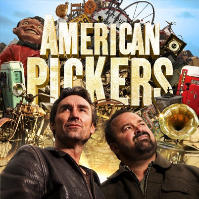
The show follows Mike Wolfe and Frank Fritz as they travel primarily around the greater Midwestern United States in a Mercedes-
Here’s how they describe their job.
I’m Mike Wolfe. And I’m Frank Fritz. And we’re pickers. We travel the back roads of America looking to buy rusty gold.
We’re looking for amazing things buried in people’s garages and barns. What most people see as junk, we see as dollar signs. We’ll buy “anything” we think we can make a buck on. Each item we pick has a history all its own and the people we meet? Well, they’re a breed all their own.
We make a living telling the history of America...one piece at a time.
And how do they find this rusty gold?
Wolfe and Fritz explore people’s homes, barns, sheds, and other outbuildings, and other places where they have stored antiques and collectibles. They call upon casual collectors, hoarders and occasionally people who have inherited overwhelming collections of apparent junk.
I’ve watched the show a few times. It’s sort of a do-
Not so with the Pickers. They go to the owners of “stuff” and rummage through piles of what looks like trash, often picking up an item that looks just as trashy as everything else. They just have a natural feel for what such an item will look like when cleaned up and/or restored, and can recognize the “gold under the rust.” But I’m here to tell ya that in the huge piles they pick through in most hoarders’ homes and outbuildings, they find very few such treasures. If one ton of junk yields one collectible old child’s sled worth $100, it hardly “justifies” the hoarding!
But yes, they do at times find really cool stuff…and it often shines a light back on some little fascinating “point in history.”
And thus we are back to the purpose of this report on the Gay 90s (and the purpose of this website in general)…I also want to shine some light on some portions of history that have been long hidden or ignored. Only recently has it dawned on me that, in one way, the tendency of Americans to hoard things actually has sometimes been a blessing instead of a curse for those wanting to know more about that history.
Much of what we can understand about “daily life of the common family” in any era doesn’t come at all from the “heirlooms” of the rich of the time period, or from the granite monuments put up by men who want to glorify a battle or a major event. Think about it…we can see the grandiosity of the pyramids or Sphynx in Egypt. They certainly weren’t ephemeral! But seeing them doesn’t give us a clue of what it was like to live the daily life of one of the slaves whose backbreaking labor yielded those monuments.
No, it isn’t the lasting monuments that give us a peek into the life, into the heart, of a historical era. It is the ephemera of the era! And in America, because of the tendency of so many people to keep ephemera, historians have, in recent decades, been far more able to help us meet and get to know the man on the street in the past.
The word ephemera has taken on a much more narrow definition when used in an academic historical setting. It doesn’t refer to objects, such as Happy Meal figurines. It is a technical term for documents.
The Ephemera Society puts it this way:
Ephemera includes a broad range of minor (and sometimes major) everyday documents intended for one-
It also includes newspapers and, to a lesser extent, magazines. Why do I say “to a lesser extent” magazines? Well, you can’t really call the National Geographic Magazine “ephemeral!” For most of its run since 1888, its content has been so cool—especially the amazing photos—that almost no one could bear to part with the magazines from their subscription as they piled up. Early on it was just the internal photos, as the covers were pretty bland.
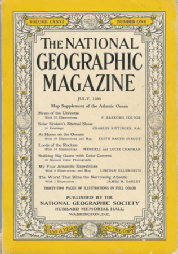
But it became even more difficult when they added fabulous full-
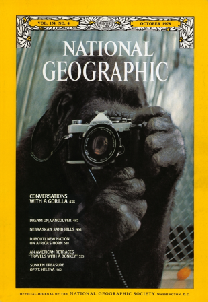
I can remember, as a teenager in the 1960s, my own parents’ collection, which went back to the 1940s, and continued on almost until their deaths in the 2000s. My grandparents had a similar collection too. Almost nobody, of course, really “collected” them … and read them over and over. They merely “accumulated” them and consigned them to storage boxes. There are no doubt lots of “almost mint condition” Geographics out there because of this.
The affliction is almost universal … and has long been a topic of both humor and angst. You can google “hoarding National Geographic magazines” and get over 400,000 websites! Humorously, the National Geographic Channel website itself mentions a number of its own television programs which have been about the topic of pathological hoarding. I don’t know if they addressed the issue of … hoarding issues of National Geographic or not!
Sigh. A confession. In 2009, I succumbed myself. While googling for old issues of the mag to find some neat pics of covers, I discovered I could order on Amazon.com a searchable computerized 6 DVD set of every National Geographic from 1888 to 2009 for less than $30. The whole set weighs less than 11 ounces, and takes up a space just 2.8 x 5.8 x 7.8 inches—barely that of a single mid-

Compare that to the literally tons that the complete collection of paper editions would have weighed, and the garage-
But back to the subject of historical ephemera.
While each piece of ephemera itself is transitory in meaning, by combining a large collection of ephemera from the same time period, an amazingly detailed picture of aspects of that time period can emerge. Each piece of ephemera…a private letter, a newspaper clipping of an editorial or an interview or a news story, a poster about an event, a tin-
There have always been ephemera collections…such as the news clipping files in newspaper offices. But only with the advent of the Internet, and the ability of literally millions of people to photograph or scan in pics of written or printed ephemera and make them available to the whole world…has a thorough re-
In the process of reading about the research of many scholars who have extensively collected, sorted, examined, and compiled ephemera, I have finally realized that the details of momentary military battles of the Civil War, that take up so much space on bookstore shelves, were virtual blips in the reality of 19th century history. Even though they are honored endlessly with big ol’ granite monuments, visited regularly by those who Never Forget.
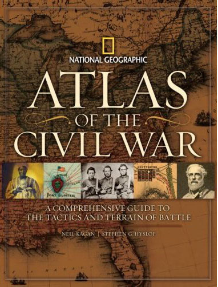
It is the “real life” of the vast majority of Americans of the 19th century that has been given short shrift by historians, unvisited by almost anybody…until recently.
Especially until the rise of the Internet. Now, for the first time in history, we are able to have virtually everyone in the whole country “go through their attic” and pull together unlimited bits of ephemera from every time period in our history. And much of it has turned out to be rusty gold in terms of helping us piece together a much more accurate picture of our collective history. We can even know a lot more about the daily lives of the soldiers who fought in those battles through ephemera, rather than just how many young, raw troops stormed up which hill on what date using which tactic under which general to kill how many exhausted young men from the other side.
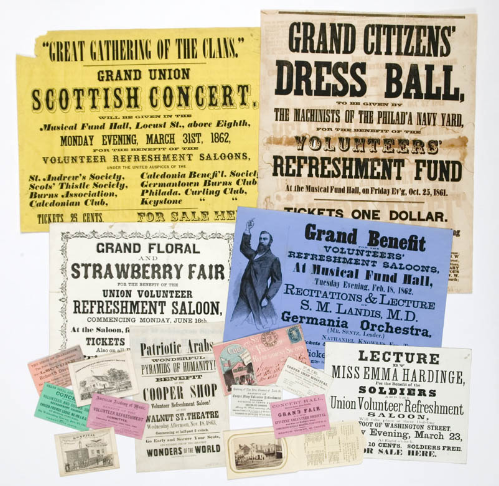
In my history writings I use the concept of ephemera perhaps a little more loosely than the academicians. Any object or document—or, in later years, photos and sound and video recordings—that was not expected or intended to be preserved for generations is what I have in mind. This could include things such as a person’s private diary entries, a TV commercial, the script of a speech—yes, sometimes even something as mundane as a give-
I’ve been busy in recent years reading a large number of books about American History, both overviews of eras (such as the Gilded Age and the ‘30s Depression) and detailed examinations of specific topics (such as propaganda, lynching, and popular entertainment.) I have found that the most compelling writings, those that give the clearest view to the reader, have been those that extensively draw on first-
Obviously, we need to put any bit of ephemera properly into its wider context, combining it with related ephemera and information from many other sources, and not jump to conclusions just on the basis of information provided by one item or a small collection of items. It is common fodder for jokes that archaeologists and anthropologists sometimes fall into that kind of hasty assumption, leading them to goofy conclusions. The best example I ever saw of this was a 1978 skit on Saturday Night Live called “The Treasures of Morton Kamen.”
The title was a pun on “The Treasures of Tutankhamun”—priceless treasures from King Tut’s tomb were “on tour” in America in 1977, shown at various museums in a display dubbed with that title.
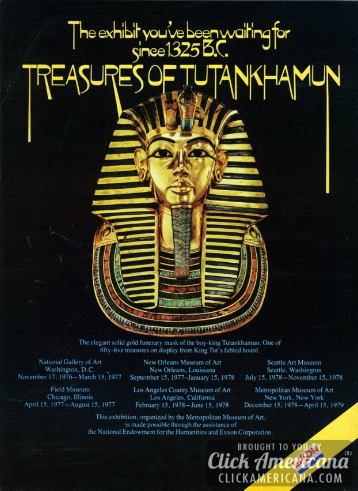
Saturday Night Live aficianados may also remember a musical skit that year featuring Steve Martin singing his hit single “King Tut,” which also took advantage of the big publicity around the King Tut tour.

Check out his performance:
Here’s the script of the Treasures of Morton Kamen skit below, and little screen shots of what was being shown on screen during the skit. Intended to represent a segment of a fictional show on archaeology broadcast at some point centuries from the present, the hostess is “Tina Gemini” (Laraine Newman).
Tina Gemini: Good evening. I’m Tina Gemini. On April 12th, 1962, a group of explorers working in the blistering desert heat in a small community near Palm Springs entered this small corridor... [ she points to a diagram on an easel of an aerial view of a hotel ]

Exactly fifty paces away, they broke into a sealed opening to this chamber within... that beheld some of the most splendid examples of funerary riches known to mankind. The relics of an age gone by, perfectly preserved for us today. Join me as we discover together... “The Treasures of Morton Kamen”.
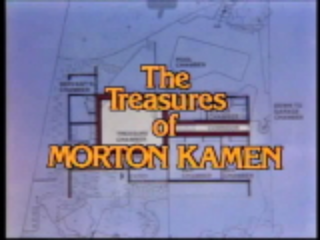
Tina Gemini V/O: At the moment of Morton Kamen’s death, the air conditioning in the sealed chamber was set so low that everything, including his wife Shirley, has been perfectly preserved.

Tina Gemini V/O: All we know about Morton Kamen is that he was an incredibly rich man who surrounded himself with the spoils of his civilization. Powerful amulets protected his feet.
Tina Gemini V/O: While potent animal symbols, like the holy alligator were used to protect his life. He had literally hundreds of tunics like this, in virtually every color of the rainbow.
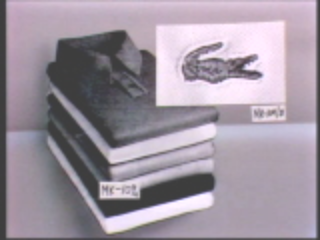
Tina Gemini V/O: The sacrificial feasts were prepared in this vessel, and, miraculously, the remains of a freshwater tuna fish and noodle offering are as fresh today as the day as the day it was prepared.
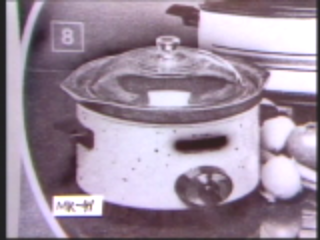
Tina Gemini V/O: And here, the most exciting of the riches, is the famous golden chariot of Morton Kamen, used, we believe, in an ancient ritual utilizing long sticks to bat tiny balls into holes in the ground for public adulation.
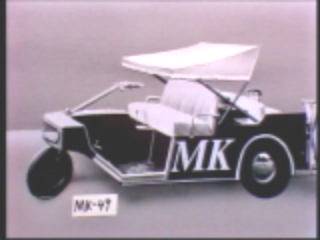
Tina Gemini: Another find was this primitive recording device, which enables us to actually hear Morton Kamen’s voice and this strange message. [ she presses Play ]
Voice of Morton Kamen: [ thickly Jewish—it is John Belushi] Hello! Morton and Shirley are out right now, but we’ll be good to get back if you’ll leave your name and number after the beep tone. Have a nice day. [ beeeeep ]
Tina Gemini: [ she turns it off ] Did that beep-
Yes, it’s good not to base historical assumptions about the religious life of America in the 1960s on the Crockpot of Morton Kamen!
So keeping that principle in mind, let’s look some more at the Not So Gay ‘90s.